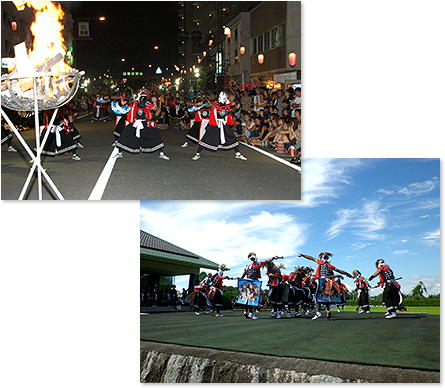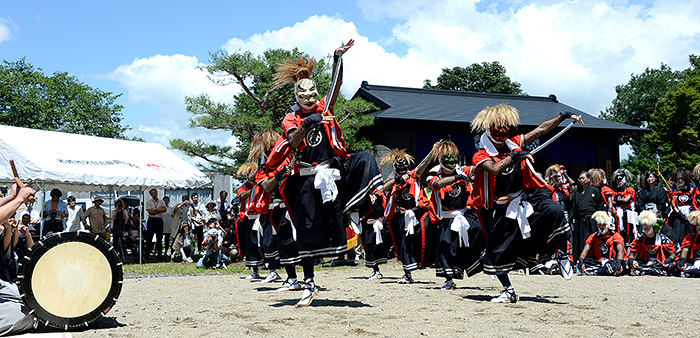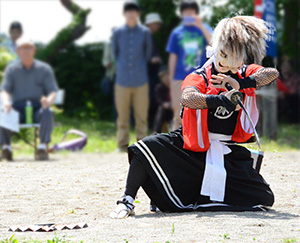Onikembai

The Kitakami area’s local tradition of Onikembai” is technically one form of “Nembutsu Kenbai.” (Buddhist enlightenment dance) Because the dancers ware menacing demon-like masks which represent a reincarnation of Buddha for their majestic performance. It became known as “Onikembai” or the sword dance with demon mask. There are 12 groups performing Onikembai in the city, and two of these have been designated as IIFCP (Important Intangible Folk Cultural Properties) by the national government. There are about 20 dances performed. Some of them become circle dances, others look like martial arts, and some have elements of acrobatics.
History


The origin of Onikembai goes back 1300 years. During the Taiho Era (701-704 C.E.) the ascetic monk En no Gyoja began dancing a “Nembutsu Odori” in prayer for peace, bountiful harvest, and prosperity among the people. After that, this dance became widely known when people were triumphantly going to or returning from war. Dancing while wearing an imposing-looking mask is generally called “Onikembai”, but actually the masks have no horns and they are not demons, but rather incarnations of Buddha. The masks come in four colors: white, blue, red, and black. The white mask is called “Ichikembai” and is only worn by the leader.





更新日:2021年05月11日